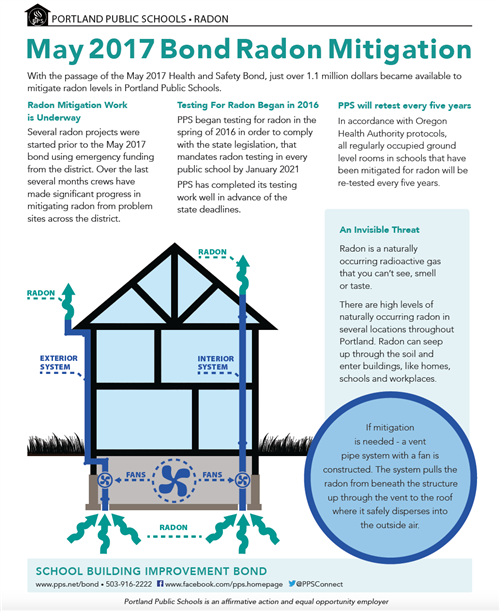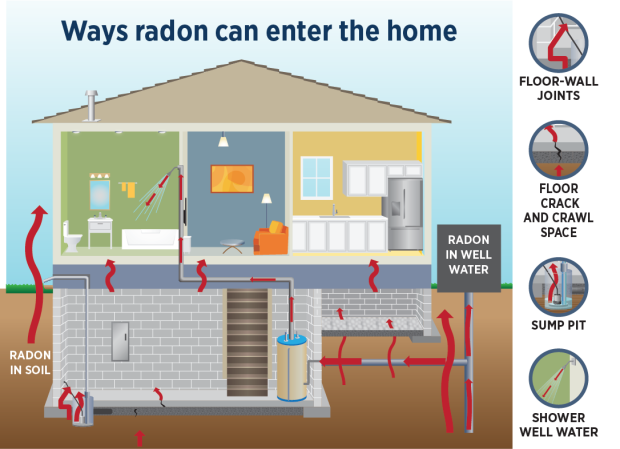Radiation Security
Is radon really bad for you?
Breathing radon over time increases your risk of lung cancer. Radon is the second leading cause of lung cancer in the United States. Nationally, the EPA estimates that about 21,000 people die each year from radon-related lung cancer. Only smoking causes more lung cancer deaths.
If you can http://franciscoltct399.cavandoragh.org/how-to-pass-a-radon-test maintain your interior radon levels at 2 pCi/L or lower, you'll encounter extremely reduced raised threat of creating lung cancer cells as a result of radon. When you reach the 1.3 pCi/L degree that is typical for indoor air, just 2 non-smokers out radon testing chattanooga of 1,000 will develop lung cancer specifically because of the direct exposure.
The EPA sets the level of unsafe radon gas direct exposure at or over 4 pCi/L. It's suggested that you undergo mitigation efforts to decrease exposure if your house has radon gas levels surpassing this action level. You'll most definitely need mitigation and may require much more considerable improvements to secure off the resource of the gas if testing discloses a much greater level.
Is radon mitigation really necessary?
When radon gas enters the body, it exposes the lungs to small amounts of radiation. In small quantities, experts say this is harmless. However, in persistent exposures or larger quantities, radon can damage the cells of the lining of the lungs, increasing a person's chance of developing lung cancer.
At the time of our documents (January 2011), Maryland was the only state without any type of radon control program. In addition, 3 other states had programs that consisted just of web-based details concerning radon or maps of radon degrees in the state.
- Radon gas is a naturally-occurring result of the contaminated degeneration of Uranium in the soil.
- Depending on your geographical location, the radon levels of the air you take a breath outside of your residence might be as high as 0.75 pCi/L.
- The United States EPA has placed it clearly, stating, "Any radon direct exposure has some threat of causing lung cancer.
How do you radon rid eliminate radon?
Possible symptoms include shortness of breath (difficulty breathing), a new or worsening cough, pain or tightness in the chest, hoarseness, or trouble swallowing. If you smoke and you know you've been exposed to high levels of radon, it's very important to quit smoking.
The national standard of outdoors radon levels is 0.4 pCi/L as well as it is approximated by the National Academy of Sciences that outdoor radon degrees create approximately 800 of the 21,000 radon generated lung cancer cells fatalities in the US each year. Your danger of lung cancer boosts substantially with exposure to higher radon levels. Lung cancer risk climbs 16% per 2.7 pCi/L boost in radon exposure. Globe Wellness Organization, 2009 researches show that radon is the primary source of lung cancer among people that have actually never ever smoked.

Wellness
While any type of level of radon can have an effect, the EPA says analyses below 2 pCi/L is considered normal as well as just carries a fairly tiny boosted threat of lung cancer. It's feasible yet typically challenging to lower radon gas exposure below these degrees. Radon Act 51 gone by Congress established the all-natural outside level of radon gas (0.4 pCi/L) as the target radon degree for interior radon levels. The United States EPA was tasked with establishing functional guidelines as well as referrals for the nation. At or above this degree of radon, the EPA suggests you takecorrective steps to decrease your direct exposure to radon gas.
How long does it take for radon to cause cancer?

Fact: You will reduce your risk of lung cancer when you reduce radon levels, even if you've lived with an elevated radon level for a long time. Keep in mind that radon levels below 4 pCi/L still pose some risk and that radon levels can be reduced to 2 pCi/L or below in most homes.